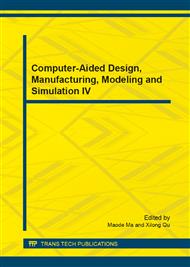[1]
Van Wezel A P, Van Vlaardingen, Posthumus R, et al Environmental risk limits for two phthalates, with special emphasis on endocrine disruptive properties. Ecotoxco Environ Safety, 2000, 46: 3205-3214.
DOI: 10.1006/eesa.2000.1930
Google Scholar
[2]
Lee B M, Koo H J. Hershberger assay for antiandrogenic effects of phthalates . J Toxic Environ Health A, 2007, 70(15-16): 1365-1370.
DOI: 10.1080/15287390701432285
Google Scholar
[3]
Howdeshell K L, Rider C V, Wilson V S, et al. Mechanisms of action of phthalate esters , individually and in combination , to induce abnormal reproductive development in male Res, 2008, 108(2): 168-176.
DOI: 10.1016/j.envres.2008.08.009
Google Scholar
[4]
Melnick R L. Is peroxisome proliferation an obligatory precursor step in the carcinogenicity of di(2-ethylhexyl) phthalate(DEHP) . Environ Health Perspect, 2001, 109(5): 437-442.
DOI: 10.1289/ehp.01109437
Google Scholar
[5]
Swan S H, Main K M, Liu F, et al. Decrease in anogenital distance among male infants with prenatal phthalate exposure . Environ Health Perspect, 2005, 113(8): 1056-1061.
DOI: 10.1289/ehp.8100
Google Scholar
[6]
Wancheng Zhan. Food safety metaphor plasticizer storm. Assets and financial administration, 2011 (11): 11-12.
Google Scholar
[7]
Liu Qiang. China Wine Association statement: basically contain plasticizer components in liquor. Morning of life, Shanxi: 2012-11-21.
Google Scholar
[8]
Li Jing. In wine assist: positive research standard liquor plasticizer content. The Beijing News, Beijing: 2012-11-20.
Google Scholar


